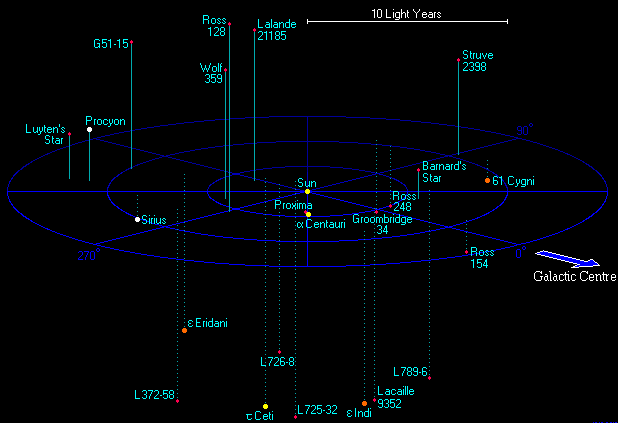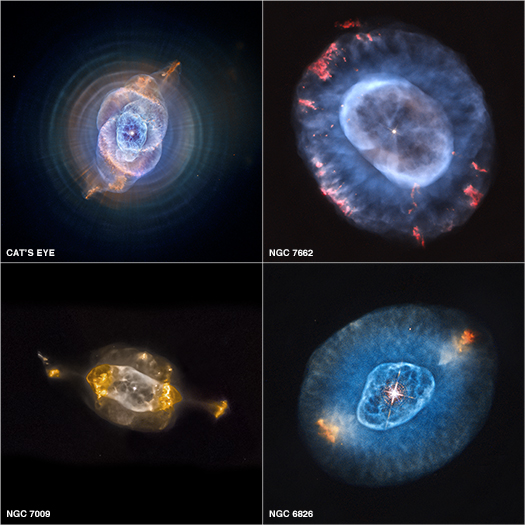|
NGC 7789
NGC 7789 (also known as Caroline's Rose or the White Rose Cluster) is an open cluster in Cassiopeia that was discovered by Caroline Herschel in 1783. Her brother William Herschel Frederick William Herschel (; german: Friedrich Wilhelm Herschel; 15 November 1738 – 25 August 1822) was a German-born British astronomer and composer. He frequently collaborated with his younger sister and fellow astronomer Carolin ... included it in his catalog as H VI.30. This cluster is also known as the "White Rose" Cluster or "Caroline's Rose" Cluster because when seen visually, the loops of stars and dark lanes look like the swirling pattern of rose petals as seen from above. References External links * * SEDS– NGC 7789 7789 Open clusters Cassiopeia (constellation) Astronomical objects discovered in 1783 Discoveries by Caroline Herschel {{star-cluster-stub ... [...More Info...] [...Related Items...] OR: [Wikipedia] [Google] [Baidu] |
Cassiopeia (constellation)
Cassiopeia () is a constellation in the northern sky named after the vain queen Cassiopeia, mother of Andromeda, in Greek mythology, who boasted about her unrivaled beauty. Cassiopeia was one of the 48 constellations listed by the 2nd-century Greek astronomer Ptolemy, and it remains one of the 88 modern constellations today. It is easily recognizable due to its distinctive ' W' shape, formed by five bright stars. Cassiopeia is located in the northern sky and from latitudes above 34°N it is visible year-round. In the (sub)tropics it can be seen at its clearest from September to early November, and at low southern, tropical, latitudes of less than 25°S it can be seen, seasonally, low in the North. At magnitude 2.2, Alpha Cassiopeiae, or Schedar, is generally the brightest star in Cassiopeia, though it is occasionally outshone by the variable Gamma Cassiopeiae, which has reached magnitude 1.6. The constellation hosts some of the most luminous stars known, including the yel ... [...More Info...] [...Related Items...] OR: [Wikipedia] [Google] [Baidu] |
Lightyear
A light-year, alternatively spelled light year, is a large unit of length used to express astronomical distances and is equivalent to about 9.46 trillion kilometers (), or 5.88 trillion miles ().One trillion here is taken to be 1012 (one million million, or billion in long scale). As defined by the International Astronomical Union (IAU), a light-year is the distance that light travels in a vacuum in one Julian year (365.25 days). Because it includes the time-measurement word "year", the term ''light-year'' is sometimes misinterpreted as a unit of time. The ''light-year'' is most often used when expressing distances to stars and other distances on a galactic scale, especially in non-specialist contexts and popular science publications. The unit most commonly used in professional astronomy is the parsec (symbol: pc, about 3.26 light-years) which derives from astrometry; it is the distance at which one astronomical unit subtends an angle of one second of arc. Defini ... [...More Info...] [...Related Items...] OR: [Wikipedia] [Google] [Baidu] |
Collinder Catalogue
In astronomy, the Collinder catalogue is a catalogue of 471 open clusters by Swedish astronomer Per Collinder. It was published in 1931 as an appendix to Collinder's paper ''On structural properties of open galactic clusters and their spatial distribution''. Catalogue objects are denoted by ''Collinder'', e.g. "Collinder 399". Dated prefixes include as ''Col + catalogue number'', or ''Cr + catalogue number'', e.g. "Cr 399". Vital statistics * The catalogue contains 471 objects: 452 open clusters, 11 globular clusters, 6 asterisms, 1 stellar moving group, and 1 stellar association. * Objects are spread out across the entire celestial sphere. * Cr 8 is the northernmost Collinder object, located at a declination of +85º in the constellation Camelopardalis. * Cr 411 is the southernmost Collinder object, located at a declination of -79º in the constellation Octans. Collinder objects which are also Messier objects The Collinder Catalogue contains 29 objects which are part of the ... [...More Info...] [...Related Items...] OR: [Wikipedia] [Google] [Baidu] |
Melotte Catalogue
In astronomy, the Melotte catalogue is a catalogue of 245 star clusters by British astronomer Philibert Jacques Melotte. It was published in 1915 as ''A Catalogue of Star Clusters shown on Franklin-Adams Chart Plates''.Melotte, P. J"A Catalogue of Star Clusters shown on Franklin-Adams Chart Plates" ''MmRAS'', 1915 Catalogue objects are denoted by ''Melotte'', e.g. "Melotte 20". Dated prefixes include as ''Mel + catalogue number'', e.g. "Mel 20". Vital statistics * The catalogue contains 245 objects: 161 open clusters, 81 globular clusters, 2 Asterism (astronomy), asterisms, and 1 galaxy. * Objects are spread out across the entire celestial sphere. * NGC 188, Mel 2 is the northernmost Melotte object, located at a declination of +85º in the constellation Cepheus (constellation), Cepheus. * IC 4499, Mel 129 is the southernmost Melotte object, located at a declination of -82º in the constellation Apus (constellation), Apus. Melotte objects which are also Messier objects The Melotte ... [...More Info...] [...Related Items...] OR: [Wikipedia] [Google] [Baidu] |
Open Cluster
An open cluster is a type of star cluster made of up to a few thousand stars that were formed from the same giant molecular cloud and have roughly the same age. More than 1,100 open clusters have been discovered within the Milky Way galaxy, and many more are thought to exist. They are loosely bound by mutual gravity, gravitational attraction and become disrupted by close encounters with other clusters and clouds of gas as they orbit the Galactic Center. This can result in a migration to the main body of the galaxy and a loss of cluster members through internal close encounters. Open clusters generally survive for a few hundred million years, with the most massive ones surviving for a few billion years. In contrast, the more massive globular clusters of stars exert a stronger gravitational attraction on their members, and can survive for longer. Open clusters have been found only in spiral galaxy, spiral and irregular galaxy, irregular galaxies, in which active star formation is o ... [...More Info...] [...Related Items...] OR: [Wikipedia] [Google] [Baidu] |
Caroline Herschel
Caroline Lucretia Herschel (; 16 March 1750 – 9 January 1848) was a German born British astronomer, whose most significant contributions to astronomy were the discoveries of several comets, including the periodic comet 35P/Herschel–Rigollet, which bears her name.Nysewander, Melissa. Caroline Herschel. Biographies of Women Mathematicians, Atlanta: Agnes Scott College, 1998. She was the younger sister of astronomer William Herschel, with whom she worked throughout her career. She was the first woman to receive a salary as a scientist and the first woman in England to hold a government position. She was also the first woman to publish scientific findings in the ''Philosophical Transactions'' of the Royal Society, to be awarded a Gold Medal of the Royal Astronomical Society (1828), and to be named an Honorary Member of the Royal Astronomical Society (1835, with Mary Somerville). She was named an honorary member of the Royal Irish Academy (1838). The King of Prussia presented h ... [...More Info...] [...Related Items...] OR: [Wikipedia] [Google] [Baidu] |
William Herschel
Frederick William Herschel (; german: Friedrich Wilhelm Herschel; 15 November 1738 – 25 August 1822) was a German-born British astronomer and composer. He frequently collaborated with his younger sister and fellow astronomer Caroline Herschel (1750–1848). Born in the Electorate of Hanover, William Herschel followed his father into the military band of Hanover, before emigrating to Great Britain in 1757 at the age of nineteen. Herschel constructed his first large telescope in 1774, after which he spent nine years carrying out sky surveys to investigate double stars. Herschel published catalogues of nebulae in 1802 (2,500 objects) and in 1820 (5,000 objects). The resolving power of the Herschel telescopes revealed that many objects called nebulae in the Messier catalogue were actually clusters of stars. On 13 March 1781 while making observations he made note of a new object in the constellation of Gemini. This would, after several weeks of verification and consulta ... [...More Info...] [...Related Items...] OR: [Wikipedia] [Google] [Baidu] |
NGC 7789 Map
NGC commonly refers to: * New General Catalogue of Nebulae and Clusters of Stars, a catalogue of deep sky objects in astronomy NGC may also refer to: Companies * NGC Corporation, name of US electric company Dynegy, Inc. from 1995 to 1998 * National Gas Company of Trinidad and Tobago, state-owned natural gas company in Trinidad and Tobago * National Grid plc, a former name of National Grid Electricity Transmission plc, the operator of the British electricity transmission system * Northrop Grumman Corporation, aerospace and defense conglomerate formed from the merger of Northrop Corporation and Grumman Corporation in 1994 * Numismatic Guaranty Corporation, coin certification company in the United States Other uses * National Gallery of Canada, art gallery founded in 1880 in Ottawa, Canada * National Geographic, documentary and reality television channel established in the United States in 2001 formerly called National Geographic Channel * Native Girls Code, US non-profit organis ... [...More Info...] [...Related Items...] OR: [Wikipedia] [Google] [Baidu] |
NGC Objects
The ''New General Catalogue of Nebulae and Clusters of Stars'' (abbreviated NGC) is an astronomical catalogue of deep-sky objects compiled by John Louis Emil Dreyer in 1888. The NGC contains 7,840 objects, including galaxies, star clusters and emission nebulae. Dreyer published two supplements to the NGC in 1895 and 1908, known as the ''Index Catalogues'' (abbreviated IC), describing a further 5,386 astronomical objects. Thousands of these objects are best known by their NGC or IC numbers, which remain in widespread use. The NGC expanded and consolidated the cataloguing work of William and Caroline Herschel, and John Herschel's '' General Catalogue of Nebulae and Clusters of Stars''. Objects south of the celestial equator are catalogued somewhat less thoroughly, but many were included based on observation by John Herschel or James Dunlop. The NGC contained multiple errors, but attempts to eliminate them were made by the ''Revised New General Catalogue'' (RNGC) by Jack W. ... [...More Info...] [...Related Items...] OR: [Wikipedia] [Google] [Baidu] |
Open Clusters
An open cluster is a type of star cluster made of up to a few thousand stars that were formed from the same giant molecular cloud and have roughly the same age. More than 1,100 open clusters have been discovered within the Milky Way galaxy, and many more are thought to exist. They are loosely bound by mutual gravitational attraction and become disrupted by close encounters with other clusters and clouds of gas as they orbit the Galactic Center. This can result in a migration to the main body of the galaxy and a loss of cluster members through internal close encounters. Open clusters generally survive for a few hundred million years, with the most massive ones surviving for a few billion years. In contrast, the more massive globular clusters of stars exert a stronger gravitational attraction on their members, and can survive for longer. Open clusters have been found only in spiral and irregular galaxies, in which active star formation is occurring. Young open clusters may be co ... [...More Info...] [...Related Items...] OR: [Wikipedia] [Google] [Baidu] |
Astronomical Objects Discovered In 1783
Astronomy () is a natural science that studies celestial objects and phenomena. It uses mathematics, physics, and chemistry in order to explain their origin and evolution. Objects of interest include planets, moons, stars, nebulae, galaxies, and comets. Relevant phenomena include supernova explosions, gamma ray bursts, quasars, blazars, pulsars, and cosmic microwave background radiation. More generally, astronomy studies everything that originates beyond Earth's atmosphere. Cosmology is a branch of astronomy that studies the universe as a whole. Astronomy is one of the oldest natural sciences. The early civilizations in recorded history made methodical observations of the night sky. These include the Babylonians, Greeks, Indians, Egyptians, Chinese, Maya, and many ancient indigenous peoples of the Americas. In the past, astronomy included disciplines as diverse as astrometry, celestial navigation, observational astronomy, and the making of calendars. Nowadays, professio ... [...More Info...] [...Related Items...] OR: [Wikipedia] [Google] [Baidu] |










